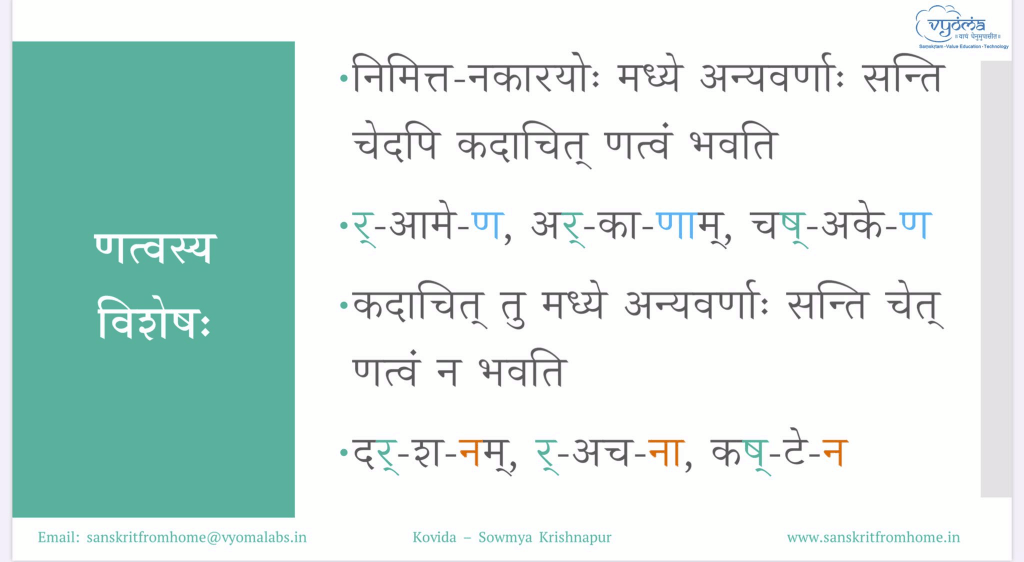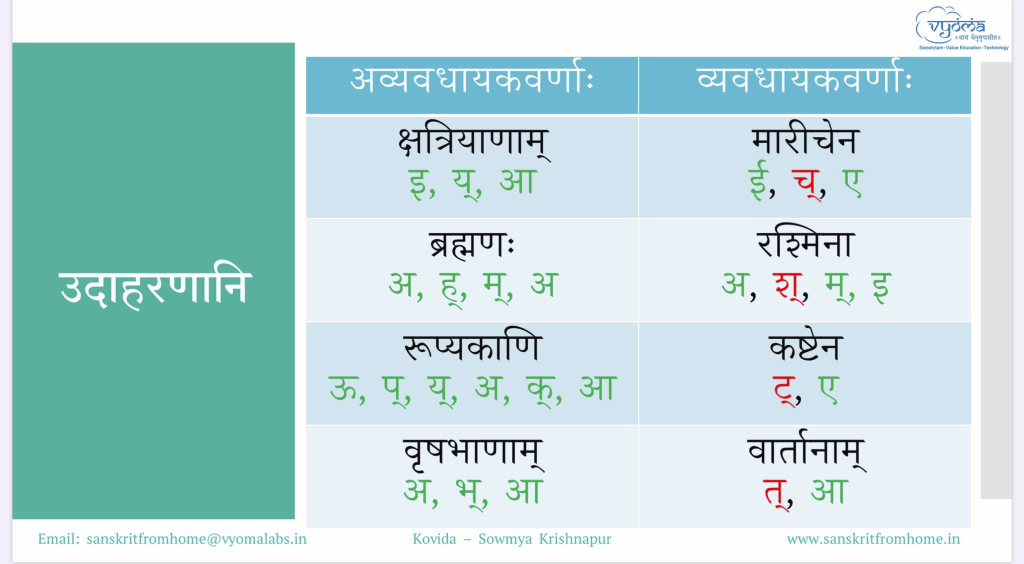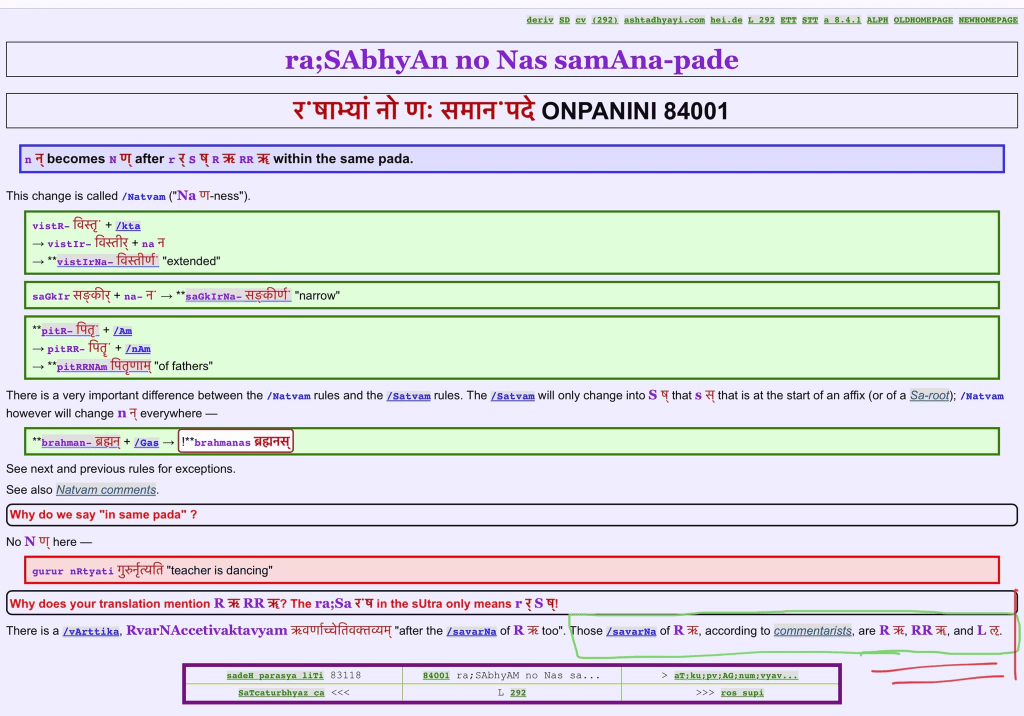What causes न to change to ण ?
Rules for णत्वम्।
Why is it रामेण & not रामेन? Why गणेशेन & not गणेषेण ?
न—>ण – A quick intro
The Basic Rule
न becomes ण in the presence of र् ऋ or ष्

If these letters are immediately preceding न्, then न->ण is ALWAYS transformed
However, if there are intervening letters between न and र् or ऋ or ष् , depending on the nature of the intervening letters णत्वम् occurs

स्वराः हयव कवर्गः पवर्गः cause णत्वम्।
Others block णत्वम्।

EXAMPLES

Special Rules and Conditions: Please Note
णत्वम् is a rule WITHIN a word
If the न् is at the end of a पदम् – no णत्वम् occurs. Example: रामान्
णत्वम् does not occur between the 2 component words of a Samasa – since these are joined-together words. Example: रामनाम
However, in the case of Proper Nouns (संज्ञावाचकपदः) णत्वम् is possible
The most famous example is रामायण -> राम + अयन (the path of Rama).
While it is a समासः, it signifies a proper noun

To get a quick overview of णत्वम् , here is a 2 minute intro from the Vyoma Samskrit Kovida series by @SKrishnapur
A 2 minute intro from the Vyoma Samskrit Kovida series by @SKrishnapur
PS: It is interesting to note that while Ashtadhyayi covers only रेफः & षकारः in the sutra रषाभ्यां नो णः समानपदे ८।४।१ there is a Vaartika which adds others – including ॠ



